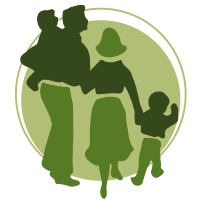The psoas muscle is one of the most fascinating muscles in our body. The muscle can both help to balance the body, keep an upright posture and prevent stiffness in the back and hips.
The psoas is commonly known as hip flexor and as it is such a centrally placed muscle on each side, it is activated in most of the big movements that your body performs on a daily basis.
Simply put the psoas muscles connect the legs with our spine. When the psoas is active, i.e. when it is used, it can give stability to the whole body. It is also needed to twist, bend and enable the body to move freely whilst walking and in exercises like yoga.
It has evolved a great deal over millennia in humans and is an example of how we have adapted to our environment.
The psoas is divided in three muscles. The psoas major, psoas minorand the iliacus. As we have transferred from walking on all fours the muscles have adapted and changed their usage accordingly. The psoas minorhas become more of a tendon and might even disappear altogether soon as we continue to evolve. The psoas majorruns along the lumbar spine and connects the vertebrae and the discs all the way up to the 12ththoracic vertebra where you find the lowest ribs in the rib cage. It then runs through the pelvis and attaches to the inside of the top of the thigh bone.
Psoas major has a big impact on how we move, bend and twist our pelvic bones. This is also why it can be causative in back pain and stiffness as well as creating imbalances in our posture. It is one of the strongest muscles in our body and is implicated in the Z shaped sideways bend when there is an acute back pain episode.
Tension and imbalance of the psoas might happen either from a one-off trauma, repeated impact or even a when we don’t move at all, so either asymmetric loading or inactivity.
A lack of frequent activity through the day coupled with long journeys by car or train in our commute and long days sitting in the office means we may only move during specific training sessions in the gym.
By doing heavy loading such as in specific weight training but without stretches through yoga or Pilates, we could unduly put too much strain on a particular muscle group. The psoas can be described as a strong elastic band which is tight when you stand up and relaxed when you bend forward. In other words your psoas is relaxed and longer when you bend your body, sit in the car or sleep on your side.
It is definitely a muscle to get to know better and make friends with by keeping it in tiptop condition!
If you would like to explore your psoas we have created a hip flexor release film on our You Tube and Clinic app which you can find on the leg section of the playlist.
Click here for the YouTube link: https://youtu.be/sTuKSR6cIqU
This article has been inspired by a magazine called Yoga World and the author is Sandra Carson.




